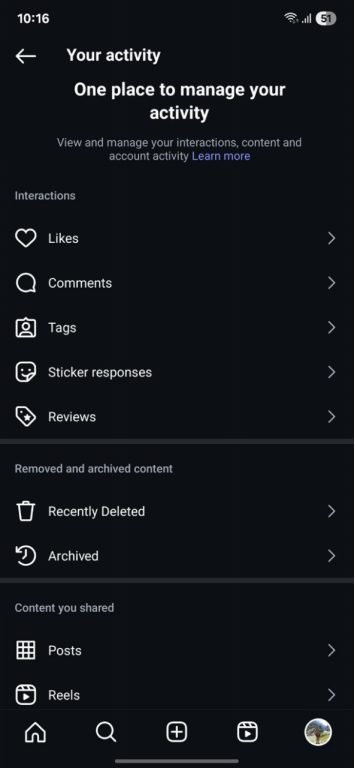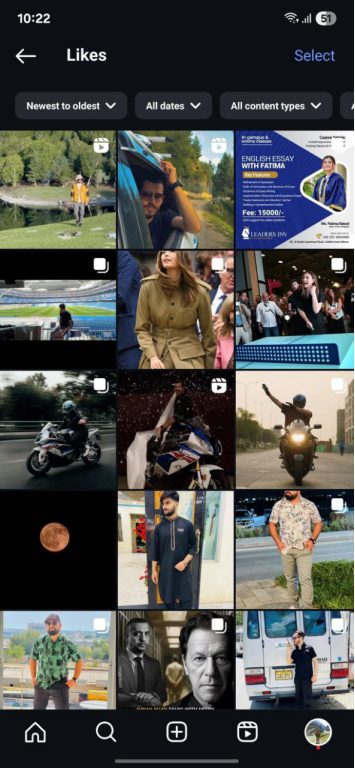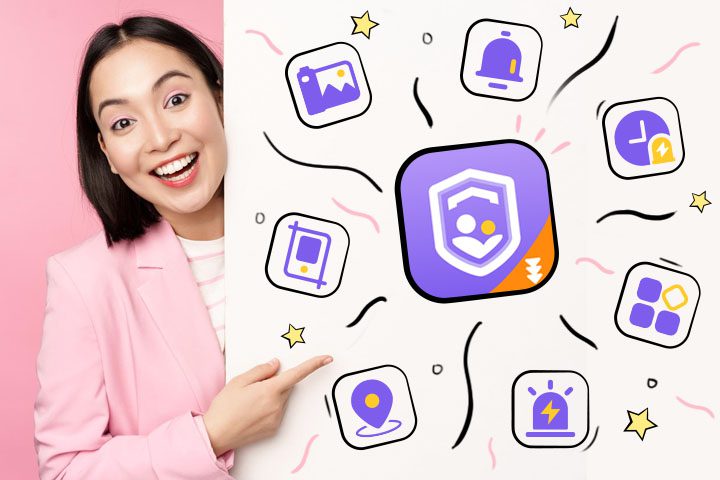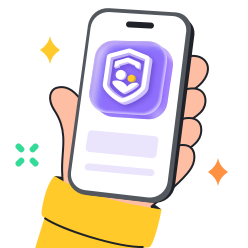Liking someone’s post using Instagram is as simple as tapping the heart icon next to it. Tapping a heart on a post helps the post’s overall count grow. Because Instagram has approximately 2 billion monthly users, likes influence how popular content becomes. Some scammers and fake services trick users with promises of easy popularity. Tackling this issue means understanding how this Likes game affects feelings and online safety. Promote open conversations about social media use with kids for healthy screen habits to build confidence, balance, and emotional resilience in the digital world.
We’ll discuss Instagram likes in this guide, how to get more likes, how to improve your likes for free or by paying, and what parents need to know to protect their kids.
What are Instagram Likes and why are they important?
When a viewer presses the heart button under an Instagram post, it shows up as a Like in statistics. When you like something, you are essentially voting for it. The algorithm on Instagram uses likes as evidence of a user’s interest. Actually, Meta sees AI as the main engine behind how Instagram works, since it interprets your likes, comments and shares to determine the most interesting content for your account. When many people like a post, Instagram’s algorithm thinks it is a favorite.
Because Instagram places popular and interesting content at the top, gaining likes usually leads to your post being shown to more people. According to analysts, if a post receives significant Likes, it will most likely be recommended more by algorithms. In simple words, more likes tend to put content higher up in a lot of people’s feeds. If your posts are more visible, you can gain new viewers and attract more followers: Experts have revealed that more people reached, including those who don’t follow you, means you are more likely to see your followers increase.
Instagram doesn’t just count hearts; it notices comments, shares, saves, and how long people linger on your posts. Getting lots of engagement early as likes, comments or quick reactions, helps your post get seen by more. Using stickers, polls in Stories and mixing Reels, carousels and regular photos also keeps the algorithm happy. In the same way, many experts in influencer marketing point out that having many likes from followers “shows that followers approve, boosting an influencer’s authority.” All in all, having many likes on your post can give it a popular look and inspire others to see what it’s about.



Keep your child safe on Instagram by tracking notifications and likes effortlessly.
How to get more Instagram likes
Raising the number of likes your posts get on Instagram will boost your account’s visibility. Higher interaction on your Instagram posts means your content becomes visible to more profiles, increasing your popularity. Read about some strategies that will help you earn likes in a natural way.



Free strategies to increase Instagram Likes
1. Try to take pictures or videos that are simply attractive and attention-grabbing. Good quality and plenty of engagement are important for Instagram’s algorithms to feature an account. In other words, you should focus on having proper lighting, sharply focused pictures and varying your shot styles. You can try using carousels, Reels and Stories as different types of content.
2. Hashtags help new users discover your posts, and studies show using them boosts engagement. Buffer highlights that “posts with hashtags receive higher engagement than those without”. Don’t just use generic tags; pick a mix of popular and niche hashtags that fit your content. For example, if you posted a photo of a healthy smoothie, use #healthyfood, #smoothies, or #wellness. Instagram allows up to 30 hashtags, but 5–10 relevant ones usually work well. Placing them in your caption or first comment can help get eyes on your post.
3. Just putting up your content isn’t the way to engage your audience. Reply to what people say, answer their DMs and take time to like their posts. According to Buffer, you should place “genuine engagement” first: answer comments, share their references to you and interact with them on their content. When you participate, your audience feels important and tends to support your future posts.
4. There are peak times of day when your followers are most active. Buffer’s analysis of over 2 million posts found that on weekdays, posting around 3 PM or 6 PM tends to get higher reach. This makes sense because many people scroll Instagram after work or school. Scheduling your posts for these high-traffic windows can increase the chance that more followers see (and like) your content right away. Note that your personal best times may vary depending on your audience’s time zone and habits.
5. If you work with others, you can reach a larger audience. One example is that the collab feature on Instagram means two (or five) accounts can work together on a single Instagram post. Hootsuite describes collab posts as a way for up to 5 accounts to join in writing a piece that appears and reaches each account’s followers. If you team up to make a collab post with someone similar, you’ll expose your posts to a bigger audience. You can also give someone control of your “Stories for the day by doing a shoutout or takeover.
Paid services for Instagram Likes
Paid methods fall into official promotions, like Instagram Ads or paying influencers, and third‐party services selling bulk likes or followers. While ads and influencers operate within Instagram’s ecosystem, third‐party providers typically use bots or click farms to inflate engagement.
Benefits:
- Paid likes or ads deliver immediate increases in engagement, making your profile appear more popular at first glance.
- Instagram’s ad tools let you target by age, interests, or location, meaning likes often come from genuine users in your desired audience.
- Paid campaigns can expose your content to people who wouldn’t otherwise encounter it, helping spark organic growth.
- For many businesses, paid methods fast-track the engagement process compared to the slower pace of purely organic growth.
Risks:
- Fake likes rarely lead to real clicks, conversions, or meaningful audience interaction.
- Many purchased likes originate from bots, so they won’t visit your site or become loyal followers.
- Inflated like counts distort analytics, making it difficult to measure actual marketing performance.
- Instagram removes inauthentic likes and may shadowban or disable accounts that exhibit unnatural like-to-comment ratios or sudden engagement spikes.
- Other cons include credibility damage. If savvy users or brands notice you have tons of likes but no comments or followers that fit your niche, it can look spammy.
- Your real followers might lose trust if they suspect you’re inflating your popularity. And of course, if you pay for an unreliable service, you could lose money to a scam with nothing to show for it.
Why are Instagram Likes a concern for parents?’



Instagram isn’t designed with kids specifically in mind, and parents often worry about the effects that “likes culture” can have on young users. Here are several key concerns parents have about Instagram likes:
- Scammers on Instagram lure teens with fake giveaways—often impersonating influencers and asking users to tag friends, then messaging “winners” for personal data or payment. Legitimate contests never request credit card details, but teens eager for likes can still be duped.
- Waiting for likes triggers dopamine hits; a low count can leave teens feeling rejected and anxious. Studies show that fewer likes correlate with increased stress and negative self-thoughts.
- Filtered, high-like posts set unrealistic beauty standards. Roughly 23% of teens report feeling worse about themselves and 29% feel pressured to post content designed for maximum likes.
- Each notification activates the brain’s reward center, encouraging repeated checking—even late at night—and cutting into sleep, school focus, and offline activities.
- Predators exploit Instagram to befriend or groom minors via likes, comments, or DMs. Legal filings have accused Meta platforms of enabling such targeting, underscoring the need for cautious DM use.
- Nearly 30% of teens feel constant pressure to post “viral” content, leading to second-guessing, deleted posts, or self-censorship, undermining social media’s creative and social benefits.
How to help parents ensure kids’ Instagram safe use
Track screen time spent on Instagram.
Monitor how much time your child spends on Instagram and other social media applications. Many smartphones and third-party apps let you see daily usage stats. Set daily limits so Instagram doesn’t monopolize their day.
Monitor app activity to detect obsessive-like checking.
Pay attention to whether your child is displaying obsessive tendencies. If your kid cannot stop checking and rechecking their Instagram Likes, you may want to watch out. They help you monitor your child’s use of apps by showing you which ones they used and for how long. Pay attention, as Instagram is popular at unusual times. You could take advantage of special tools that either display their screen or notify you whenever certain features or terms are used.
Time limits or block access during study/sleep hours
Set firm Instagram off-limits during homework and bedtime. Use built-in screen-time controls or parental apps to block access at set hours. This helps kids focus on studies, get proper rest, and break the habit of late-night scrolling for a healthier routine. Blocking Instagram during homework or family time will help your children settle down and learn more effectively.
Get alerts for suspicious behavior or unknown social connections.
This could mean using technology to alert you if your child receives a friend request from an unknown adult, or if they open an app that has been flagged as inappropriate. A good parental control tools have an alert system that notifies parents about suspicious content or behaviors. For example, if the child accesses inappropriate websites or receives messages from strangers, parental controls would push an alert to your phone. You can also set alerts for location changes (kid leaving school, etc.).
Parental Controls
No one solution works for everything, so having many plans helps keep us safe. During their teenage years, teens sometimes miss potential risks and they are still improving their judgment about online interactions. Engaging with your child’s studies helps them see you care and network with others.



With the trusted and reliable parental control features, FlashGet Kids can make these helpful ideas part of their routine. This tool gathers all these controls under one app: tracking how much time is spent on the phone, limiting use of Instagram and similar apps and notifying you about dangerous app users. By choosing these tools, you let your child maintain independence even as they form good habits on Instagram. Today, online guidance is extremely important to keep children safe and ensure important offline lessons are not forgotten.
Conclusion
Instagram Likes are more than just little hearts under posts – they’re a powerful signal in the social media world. We’ve covered how likes work with the Instagram algorithm to drive visibility, why they provide social proof, and how they can help an account grow. We also took a hard look at why parents worry about likes: scams, anxiety, self-esteem, and even predator risks can shadow a teen’s Instagram experience. In particular, FlashGet Kids stands out as a helpful solution. By using it (or similar controls) and having open conversations, you can keep Instagram fun and positive for your kids. Ultimately, combining effective strategies for gaining likes with solid parental supervision is the best way to enjoy Instagram’s benefits while staying safe.

